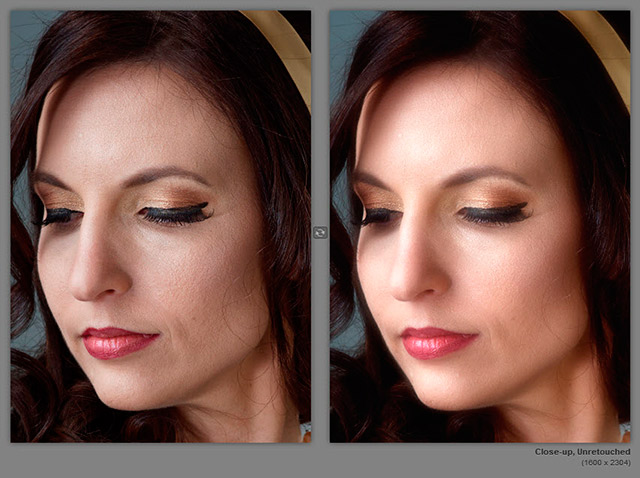
I’m something of a realist when it comes to photography. I rarely use special effects unless a client asks for it. This probably stems from my old analog days when, yes, special effects could be done in the darkroom – but it might take hours or days instead of a few seconds in the digital world.
In the field of portraiture, there is an old technique that dates back to the early part of the last century called “soft-focus.” You are likely familiar with it; an image might appear soft and slightly blurry, but is in fact in very sharp focus. In the days before pixel-editing (before there were pixels, even), the technique was used to minimize the impact of skin blemishes without having to resort to expensive and time-consuming airbrushing. Illustrated above – on the left is the original portrait of Julie. On the right is after the application of the digital soft-focus filter. Click, move a slider, done.
Do you know how we did the same thing in the old darkroom days? No? Well, it involved a bit of subterfuge. We would raid the pantyhose drawer of the wife, girlfriend, or significant other and purloin one of said item. To carry out this technique to a successful conclusion required that one not get caught.
We would then cut a fairly large square of material from the garment (thus rendering the garment unfit for its original purpose) and stretch it over a wire frame. Next, we would cut a hole in the middle of the stretched fabric. The size of the hole would partly determine the degree of softening in the final image. If one were industrious and wanted to somewhat standardize the soft-focus process, multiple garments could be snatched from the drawer and a series of wire frame “filters” could be fabricated, each with a different size hole. The Law of Averages played an important role here: the more garments that were stolen, the greater the risk was of being found out. Or, was that Murphy’s Law?
At any rate, once the negative was placed into the enlarger and the print paper upon the easel below, we simply held the wire frame soft-focus filter in the projection path between enlarger lens and print paper. Once the enlarger was turned on and the timer activated, we would wave the filter back and forth. The speed and degree of lateral movement also determined how much softening would occur.
Was this a bit more tedious than moving a slider? Yes. And was it as precise in application of the effect as digital? No.
On the other hand, we had absolutely no need for a hard drive backup!
Satirical Fact by Allen Moore
Text and photo: © 2016 Allen Moore. All rights reserved.

Leave a Reply